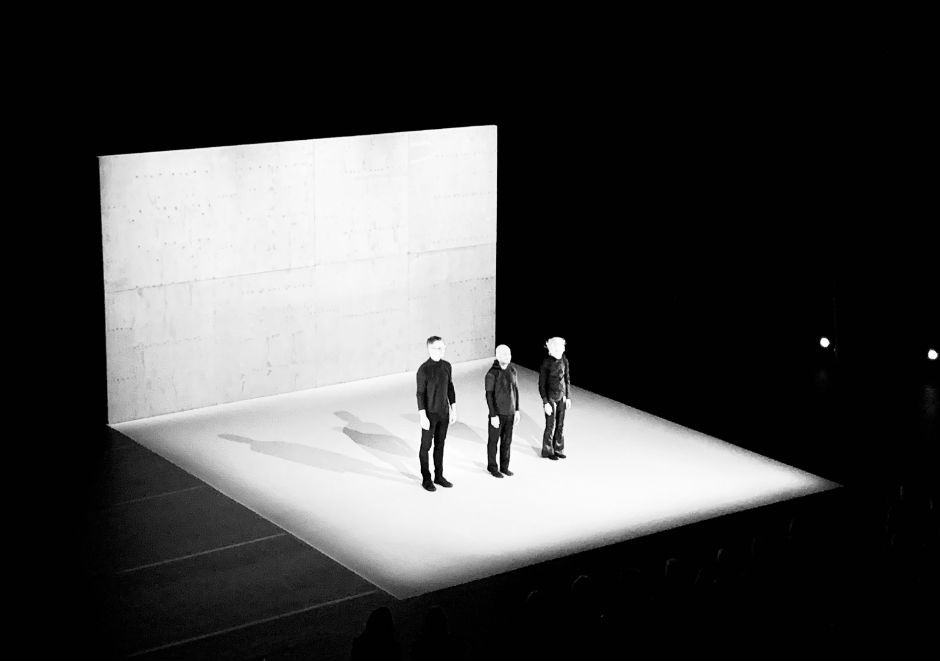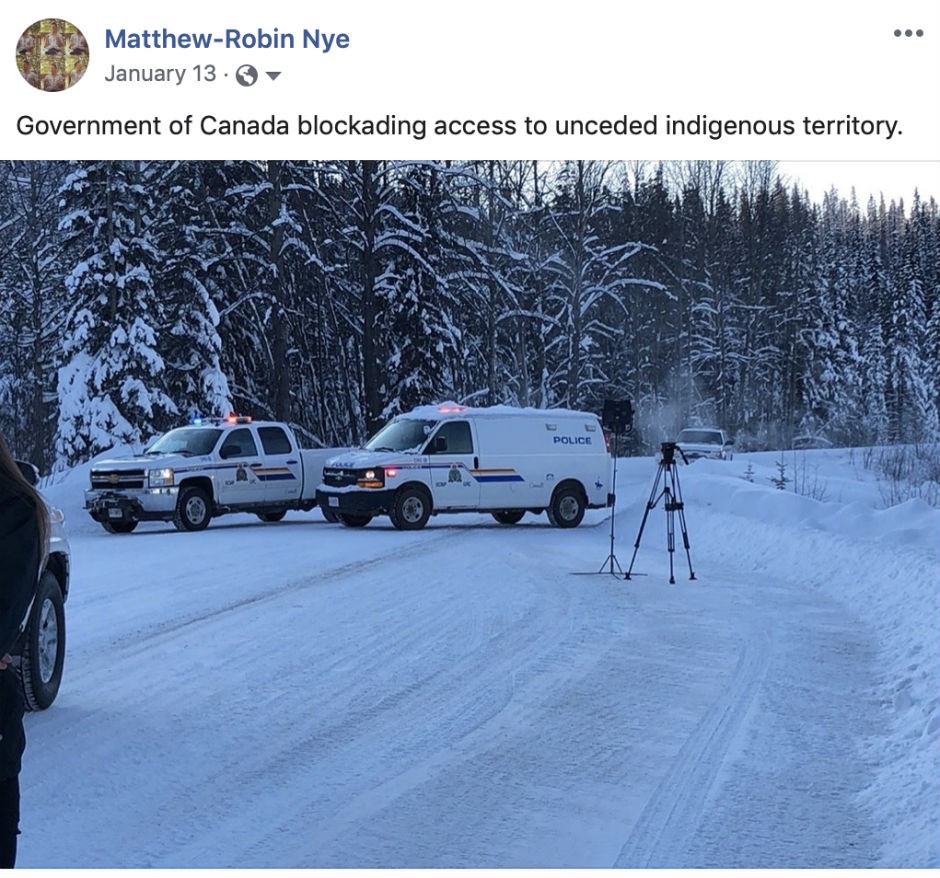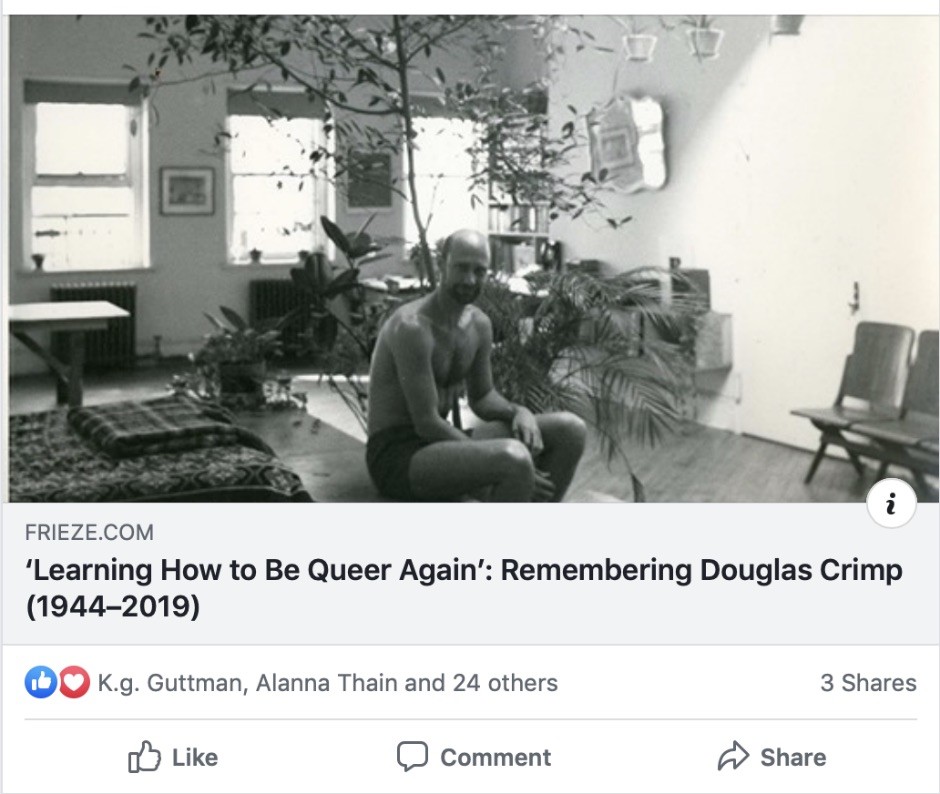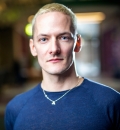Matthew-Robin Nye is a conceptual artist and Joseph-Armand Bombardier PhD student at the Centre for Interdisciplinary Studies in Society and Culture. Nye’s research spans the fields of contemporary art, process philosophy and performance theory to look at how to create a ‘queer utopic space’ or a concept of ‘wildness’. He is a founding member of the Curatorial Research-Creation Collective at the Milieux Institute, a member of the Senselab, and the Institute for Urban Futures.
Blog post
Seven days in the life of a humanities PhD student

Saturday, January 11
So You Think That Was Dance?
I attended Karen Fennell’s seventh iteration of her ‘dance’-based variety show — So You Think That Was Dance? — for the Bouge d’Ici Festival at the Mainline Theatre, which, in a previous iteration, I have shown work in. The show features movement-based performative practices in French and English on a first-come, first-served basis, totalling no more than 10 minutes.
The quality and mode of expression in this ‘open mic’ varies, from late-in-life blooming performers to professionalized dancers at the apex of their practices trying out new things. Experimental forms travel well-worn routes, while comical, skilled artists toy with material that plays with the artful edges of clowning — artful in its play with unexpectedly fresh humour and materiality.
The audience requires special commendation here for enthusiastic interaction and support of performers — from a wonderfully cawing laugh deep in the house that carried a joke from one crest to the next, to an unexpected and virtuosic Rubik’s Cube performance (in the dark, at times!) that nearly upstaged the main event.
Sunday, January 12
(Lecture prep)
Reading: The Archive and the Repertoire by Diana Taylor
Reading: The Presentation of Self in Everyday Life by Erving Goffman
Sundays to Tuesday afternoons, this semester, I spend the majority of my time preparing my notes and presentation for an undergraduate lecture for the special topics in fine arts course called Sexual Representation in Performing Arts.
This Tuesday’s lecture, centred around Diana Taylor’s book The Archive and the Repertoire, argues that efficacy of the field of performance studies is in its ability to engage with the knowledges found in the transcultural ‘repertoire’ of memory, movement and embodied gesture, rather than the written word. The book’s first chapter is a great introduction to performance scholarship because Taylor takes a fair amount of time laying out the field’s genesis and its concerns.
Students in an interdisciplinary classroom connect themselves with the text because it demonstrates that the field of performance studies has roots in anthropology, theatre, linguistics, fine arts, psychoanalysis, semiotics — and other fields. Because of its interdisciplinary foundation, everyone enters the classroom with a degree of expertise, which is useful, because many are taking a class about the field of art for the first time.

Monday, January 13
(Gym, lecture prep)
Reading: In the Wake: On Blackness and Being by Christina Sharpe
The Institute for Gender, Sexuality and Feminism (IGSF) at McGill hosted scholar Chirstina Sharpe for her talk, Ordinary Notes. Her latest book, In the Wake: On Blackness and Being (Duke University Press 2017) is a revelation.
The talk is beautiful, intimate, and moving. From the talk, I take away her characterization of anti-blackness as a form of weather pattern — racism (personal, structural) as a pervasive atmosphere.
On my way home, I read a short essay commemorating the life of recently departed art historian and queer theorist Douglas Crimp by Thomas J. Lax for frieze magazine. Thinking about the power of a queer epistemology that is a matter of everyday life, rather than an archive characterized by death, he concludes his essay with the following:
“Queer children can find their future in a tomb, where the historical lessons of loss have been stored. Mourning, protest and dancing are intergenerational forms of knowledge transmission interred there; they are how we learn and relearn to be queer.”
I reflect on Ordinary Notes and Sharpe’s assertion that memorials interpellate narratives of nationhood and identity. Museums perform much of the same function, insisting on ends rather than renewal. A dark, sweaty dance floor is an enactment of a cultural repertoire, an embodied memory that exceeds commemorative plaques and walls. The best dance floors can never be memorialized.

Tuesday, January 14
(Lecture prep)
Reading: Introduction to Performance by Richard Schechner
I teach my second class of the semester. Teaching, for me, is a deeply enervating experience. I rarely sleep well the night before; for several days leading up to it I am frantically compiling notes, reading and researching exhaustively, to the point where I have to tell myself to stop and prepare my slides, finalize my notes.
In the hours leading up to a lecture I am extremely focussed, gathering threads of energy, images, examples; and then, for two hours, I perform the role of pedagogue to a small lecture hall of students who might have thought that this class was going to be all about ‘sex’ — the class is, after all, called Sexual Representation in Performing Arts!
Instead, I am giving a crash course on theories of gender identity and expression; presenting an intersectional critique of structures of whiteness; and yes, thinking about how sexual minorities produce performance, art and social change.
Wednesday, January 15
(Gym, reading prep)
Reading: Cosmological Deixis and Amerindian Perspectivism by Eduard Viveiros
Reading: Two-Way Street: The Icon in the City by MJ Thompson
I sleep so well on Tuesday nights, my nervous energy expended, dragging me into my pillow. Wednesdays are languid — except for this one. I go to the gym in the morning, advice given to me by a PhD student at the end of his academic career, and the beginning of mine. They said, “Take care of your body! It is an instrument for study.”
After this, I settle into the readings for tomorrow’s PhD seminar, led by my supervisor, Erin Manning, called Human, More-than Human: theories above and beyond the Human.
The event that makes today special is that my partner Marc and I are going to drive to Ottawa after work to see Louise Lecavalier perform her dance piece, Battleground, at the National Arts Centre. This is my first time seeing her perform live, and I’m excited and nervous. She’s a central figure in the work of my minor supervisor, MJ Thompson, and a titan in the Canadian and international contemporary dance scene.
It was worth the drive.
Driving home, just ahead of a snow dump, I read MJ Thompson’s essay, Two-Way Street: The Archive in the City, which was published in the 2017 anthology Performance Studies in Canada. The essay puts into words something that I intuited but couldn’t quite grasp.
That Louise Lecavalier, first with the renowned dance company La La La Human Steps, and then, under her own company, Danse Mutante, represents not an image of dance — a juxtaposition of two contradictory formats — but an icon of a figure emerging from and representative of a confluence of historical, architectural and cultural events in 1980s Montreal.
Movement characterizing not a ‘a fixity of outmoded binaries: language, gender, nation;’ but a relational encounter with history, yes, but also expression, identity and the city (312).
Thursday, January 16
(HUMA GSA meeting, class, bathhouse)
Reading: Unprepared: Is PReP, the drug that prevents HIV, bringing revolution or regression? by Alex McLelland
As my primary supervisor, I meet with Erin Manning every month or so. I update her on academic and life progress, and our conversations, both wide-ranging and stimulating, provide both a touchpoint to stop and reflect on recent studies, as well as guide my academic process for the coming weeks.
This conversation has been particularly fruitful, as all of my activities this week — attending performances and lectures, teaching, reading — have given me a necessary charge to direct towards thinking about the last three months, which I spent at Columbia University in New York. Over two hours, we weave together disparate threads and subjects: process philosophy, ‘artful gestures,’ queer sociality/conviviality — thinking especially with Alex McLelland’s essay on the use of PrEP in gay male sexual communities.
I’m trying to find a thread that weaves through my studies, forthcoming examinations. Recently, I’ve been reflecting on the maddeningly interdisciplinary nature of my studies. Of the three fields of study that constitute my PhD in interdisciplinary humanities — studio art, performance studies, process philosophy — two are in and of themselves interdisciplinary.
My studio art practice comes from an education in architecture and intermedia arts — another multiplicity — and as described above, the field of performance studies is wildly interdisciplinary in its genesis and ongoing expression. These aren’t complaints, but an acknowledgement of the creative potential and dispersed nature of an academic interest that runs a wide and wild range.
Friday, January 17
(Faculty of Fine Arts Advisory Council, gym)
Reading: On Earth We're Briefly Gorgeous by Ocean Vuong
At night, just before going to bed this week, I’ve been reading Ocean Vuong’s On Earth We’re Briefly Gorgeous. The novel is part memoir, part protracted letter from a queer son to his Vietnamese American mother. This may sound paradoxical, but in the middle of a five-year PhD — right after a three-year MFA — it’s hard to read recreationally. All reading is work and might potentially feed one’s studies.
I often have a mechanical pencil on hand to jot notes in the margins of books, and failing the presence of a nearby pencil, I downturn the bottom corner of a page to indicate to myself that something interesting is happening on it. From Friday evening of this week, reflecting on the material in Erin Manning’s class, on page 18:
“I have had many names. Little Dog was what Lan called me, What made a woman who named herself and her daughter after flowers call her grandson a dog? A woman who watches out for her own, that’s who. As you know, in the village where Lan grew up, a child, often the smallest or weakest of the flock, as I was, is named after the most despicable things: demon, ghost child, pig snout, monkey-born, buffalo head, bastard -little dog being the more tender one. Because evil spirits, roaming the land for healthy, beautiful children, would hear the name of something hideous and ghastly being called in for supper and pass over the house, sparing the child. To love something, then, is to name it after something so worthless it might be left untouched - and alive. A name, thin as air, can also be a shield. A Little Dog Shield.” On Earth We’re Briefly Gorgeous, Ocean Vuong
Postscript
This blog post was scheduled to be published in the middle of January. This was an eventful week, to be sure, but in this sense not unlike any other during the academic semester. It’s quite late and is most notable for what isn’t present: the readings I needed to do but didn’t; the frantic rush of emails and applications that are answered and not answered, written and not written; political engagement; the core academic project — the thesis project.
About the author


